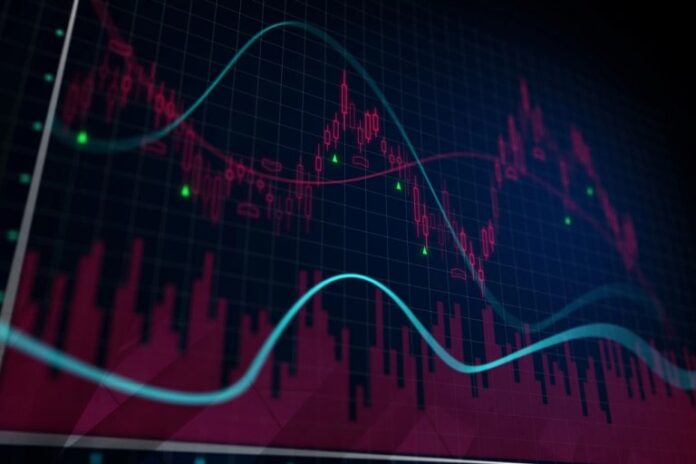Triangle patterns are a staple of technical analysis, offering valuable insights into potential market reversals or continuations.
However, not all triangles are created equal. In this section, we’ll dissect the key differences and similarities between the three most common types: symmetrical, ascending, and descending triangles.
While each triangle chart pattern shares the characteristic converging trendlines that form a triangle, their unique formations and implications for traders set them apart.
We’ll examine how their contrasting slopes and accompanying volume patterns can signal varying market sentiment and potential future price movements.
By the end of this comparison, you’ll be equipped to identify these patterns on your charts and leverage their insights to make more informed trading decisions.
What are Triangle Patterns?
Triangle patterns are a crucial aspect of technical analysis used by traders to predict market behavior.
These patterns emerge on price charts when the price of an asset moves within two converging trendlines, forming a triangle shape.
Triangle patterns are considered continuation patterns, suggesting that the price will likely continue in the direction of the prevailing trend after a brief consolidation period.
They are essential for traders because they help identify potential breakouts, where the price moves significantly out of the pattern, providing trading opportunities.
Types of Triangle Patterns
Triangle patterns are a fascinating family of chart formations in technical analysis, offering valuable clues about potential market shifts.
While they all share a distinctive triangular shape, their variations hold unique interpretations for traders.
Ascending
An ascending triangle pattern is characterized by a horizontal upper trendline and a rising lower trendline.
This pattern typically indicates a bullish market sentiment, suggesting that the price is likely to break out upwards.
It reflects a scenario where buyers are gradually gaining strength, pushing the price higher. As the lower trendline ascends, it indicates that lows are getting higher, showing increasing demand.
Traders look for the price to break above the horizontal upper trendline to confirm the pattern and signal a buying opportunity.
Key Features:
- Horizontal resistance line on top
- Rising support line at the bottom
- Bullish breakout expected
Descending
In contrast, a descending triangle pattern has a descending upper trendline and a horizontal lower trendline.
This pattern usually signals a bearish sentiment, with the expectation of a downward breakout. It suggests that sellers are gaining control over the market, forcing the price lower.
The descending upper trendline indicates that highs are getting lower, showing increasing selling pressure.
Traders anticipate a break below the horizontal lower trendline as a signal to sell or short the asset.
Key Features:
- Descending resistance line on top
- Horizontal support line at the bottom
- Bearish breakout expected
Symmetrical
A symmetrical triangle pattern is formed by two converging trendlines, one descending and one ascending, creating a more balanced shape.
This pattern can indicate either a continuation or a reversal, with the breakout direction depending on the preceding trend and other market factors.
The symmetrical triangle reflects market indecision, where neither buyers nor sellers have a clear advantage.
Traders wait for the price to break out in either direction, using the breakout as a signal to enter a trade.
Key Features:
- Converging trendlines: one ascending and one descending
- Neutral bias, breakout direction follows the preceding trend
- Signals either continuation or reversal
Comparing the Three Patterns
In technical analysis, chart patterns serve as valuable clues for predicting future price movements.
While they share a triangular shape formed by converging trendlines, each pattern presents unique characteristics and implications for traders.
Similarities
All three triangle patterns share some common features:
- They are continuation patterns that signal the potential direction of the market after a period of consolidation.
- They form on price charts through converging trendlines.
- They provide traders with breakout signals, indicating potential price movement once the pattern is complete.
Differences
Despite their similarities, these patterns have distinct characteristics:
- Breakout Direction: Ascending triangles typically break upwards, descending triangles break downwards, and symmetrical triangles can break in either direction.
- Market Sentiment: Ascending triangles indicate bullish sentiment, descending triangles suggest bearish sentiment and symmetrical triangles reflect market indecision.
- Trendline Structure: The arrangement of the trendlines differs for each pattern, affecting their interpretation and trading strategies.
Limitations of Triangle Patterns
While triangle patterns are valuable tools, they have limitations:
- False Breakouts: Sometimes, the price may break out of the pattern but quickly reverse, leading to false signals. This can result in traders entering a trade based on the breakout, only to see the price move against them.
- Time Frame Sensitivity: The reliability of triangle patterns can vary across different time frames. Patterns observed on longer time frames (e.g., daily or weekly charts) tend to be more reliable than those on shorter time frames (e.g., 5-minute or 15-minute charts).
- Dependence on Other Indicators: For better accuracy, traders often use triangle patterns in conjunction with other technical indicators such as volume, moving averages, and momentum oscillators to confirm breakout signals.
Can Triangle Patterns Fail?
Yes, triangle patterns can fail. Factors such as market volatility, unexpected news events, and changes in market sentiment can cause a pattern to break incorrectly, leading to losses.
A failed triangle pattern occurs when the price breaks out in the expected direction but then reverses and moves in the opposite direction.
Traders should always use risk management techniques, such as stop-loss orders, to mitigate potential losses from failed patterns.
Additionally, using other indicators to confirm breakouts can help reduce the likelihood of trading based on false signals.
Final Thoughts
Triangle patterns are a fundamental aspect of technical analysis, offering traders valuable insights into market behavior.
By understanding and identifying ascending, descending, and symmetrical triangles, traders can enhance their ability to anticipate market movements.
However, it is crucial to be aware of their limitations and to use additional tools and strategies to confirm signals and manage risk effectively.
Successful trading involves not only recognizing patterns but also employing comprehensive risk management practices to navigate the uncertainties of the market.
